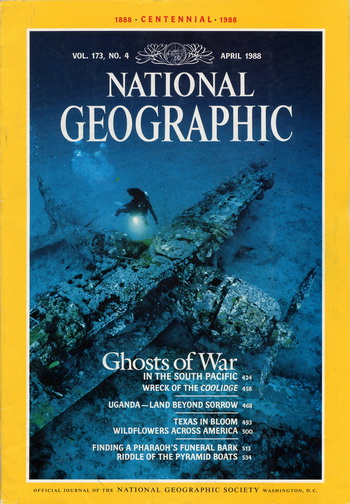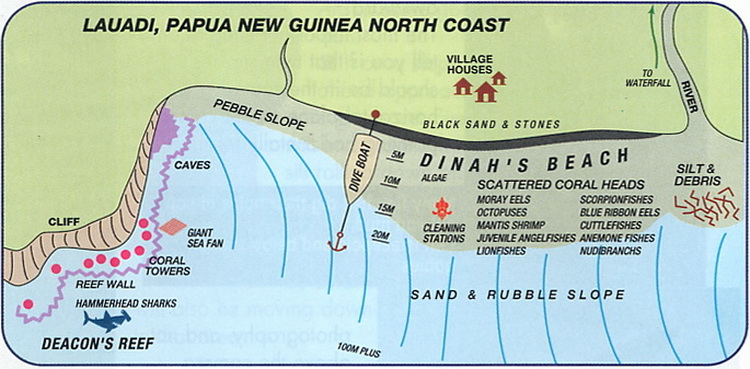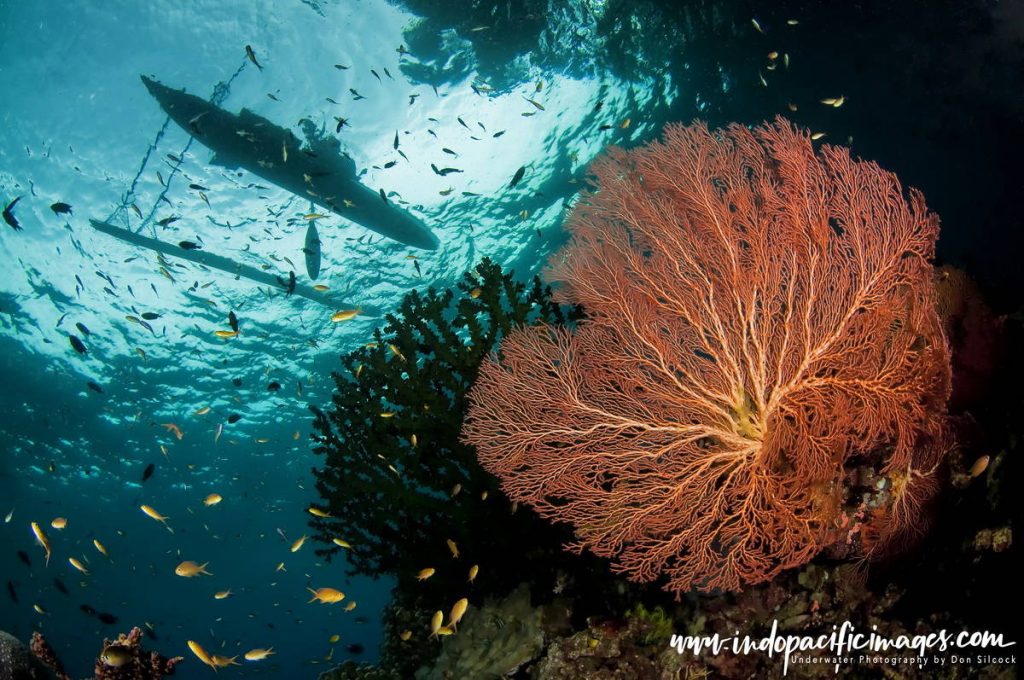
Deacon’s Reef was what started me on my personal journey (obsession…) to dive Papua New Guinea! And I can still remember the catalytic moment in late April 1988.
I was living with my young family on the island of Bahrain in the Persian Gulf and working in the oil and gas industry. Every month my issue of National Geographic magazine would appear in our post office box.
And I would devour it from cover to cover – filling my head with exotic locations for the future.
But that April issue was really something special. As the front cover had a stunning image of an underwater WWII aircraft wreck. Which was part of an article by renowned author Peter Benchley (of Jaws fame).
With the images from the extremely accomplished underwater photographer David Doubilet.
It was called Ghosts of War in the South Pacific. And in it they documented their travels around Milne Bay and New Britain. Diving the wrecks of WWII on board Ron and Valerie Taylor’s liveaboard the Reef Explorer.
Doubilet’s images were superb. The wrecks seemed to jump out of the page at you… And the scenic shots of huge sea fans were unlike anything I had ever seen before!


I had no idea where PNG was… But soon discovered it was Australia’s closest neighbor. Which helped convince me that if I really did want to follow my dreams, and dive some of the best locations in the world, it was time to pack my bags and head south!
It would be another 10 years before I actually went to PNG. Some minor logistics issues (migration, changing careers, building a house, kid’s education) kind of got in the way a bit…
But when I did, I headed for Milne Bay. Because I wanted to see for myself what David Doubliett had photographed so well! That was just over 20 years ago and I recently completed my 26th trip!

Deacon’s Reef – That First Dive…
My first trip to Milne Bay was on Rob van der Loos liveaboard MV Chertan. About half-way through the trip we dropped anchor near the village of Lauadi. Which is located on the Solomon Sea side of the peninsular that forms the north coast of Milne Bay.
Rob briefed us on Dinah’s Beach and the critters we could expect to see. Then at the end, knowing my preference for coral reefs and bigger marine creatures, Rob turned to me and said “there’s a nice spot around the headland if you prefer to shoot wide-angle”.

So when we all jumped into the water, everybody but me, turned right to explore Dinah’s Beach. While I went left in search of what I later learned was called Deacon’s Reef.

Simply stated, what I found was stunning – huge gorgonian fans and green tubastrea coral trees. Surrounded by what seemed like thousands of anthias, bright red sea whips and barrel sponges.
All in about 12m of water with a canopy of lush rainforest just above.
We stayed for two days at Lauadi and I spent most of my time round at Deacon’s Reef. Only putting in token early morning and late afternoon forays to see the critters at Dinah’s.
I am sure everybody thought I was pretty weird spending so much time around the corner, when there were so many critters to see at Dinah’s! But I really did not care, it was just so special at the headland.
Diving Deacon’s Reef
Diving Deacon’s Reef could not be easier. But just like nearby Dinah’s Beach, you will need a boat to get there!
Usually liveaboards will anchor just off the beach at Lauadi and you snorkel round to the headland. Or if you are diving from one of the smaller Tawali Dive Resort boats, they will tie up to one of the large trees that provides the thick canopy over the site, so you will enter the water just down from the main site.
Maximum depth is around 18m, but most of the best things to see are around 12m depth. The site is very easy to swim around and as you swim away from the headland you will reach the slope which drops off into the deep very rapidly. The blue water is where the “big dogs” are sometimes spotted, so keep your eyes open!

Back To: Complete Guide to Diving Milne Bay
